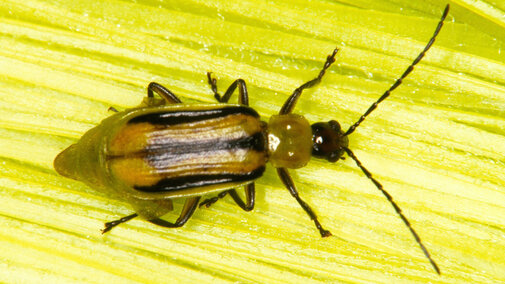The wide range in corn and soybean planting dates in Nebraska this year will have an influence on insect populations that should be considered this year and next. The resulting range in plant growth stages at some locations may affect the distribution and behavior of pest insects.
Given a choice, several insects may prefer to feed on particular corn or soybean growth stages. In corn, corn rootworm beetles and Japanese beetles prefer to feed on green silks. Corn earworm moths prefer to lay eggs on this stage also. Western bean cutworm moths prefer to lay eggs on late vegetative stage corn (pre-tassel). In soybeans, stink bugs prefer to feed on reproductive stage soybeans. The adult stages of all of these insects can move around and may concentrate in fields with their preferred growth stages.
Later in August and September, we will likely see a concentration of insects in later maturing corn and soybean fields. Bean leaf beetles, rootworm beetles, various caterpillars, soybean aphids, and other insects may concentrate in later maturing soybean fields as more mature fields have leaves that are yellowing and beginning to drop. Similarly in corn, later silking fields are a “bug magnet” for many insects, particularly corn rootworm beetles. If growers plan to plant corn in these later maturing fields in 2020, there is a greater risk for injury from corn rootworm larvae, because high numbers of adults may move into these fields from surrounding fields and lay eggs there.
Be alert to these possibilities, and scout your fields regularly to identify problem fields that may need to be treated in 2019 or 2020.

